Abstract
The conventional delivery quality assurance (DQA) process for RapidArc (Varian Medical Systems, Palo Alto, USA), has the limitation that it measures and analyzes the dose in a phantom material and cannot analyze the dosimetric changes under the motional organ condition. In this study, a DQA method was designed to overcome the limitations of the conventional DQA process for internal target volume (ITV) based RapidArc. The dynamic DQA measurement device was designed with a moving phantom that can simulate variable target motions. The dose distribution in the real volume of the target and organ-at-risk (OAR)s were reconstructed using 3DVH with the ArcCHECK (SunNuclear, Melbourne, USA) measurement data under the dynamic condition. A total of 10 ITV-based RapidArc plans for liver-cancer patients were analyzed with the designed dynamic DQA process. The average pass rate of gamma evaluation was 81.55±9.48% when the DQA dose was measured in the respiratory moving condition of the patient. Appropriate method was applied to correct the effect of moving phantom structures in the dose calculation, and DVH data of the real volume of target and OARs were created with the recalculated dose by the 3DVH program. We confirmed the valid dose coverage of a real target volume in the ITV-based RapidArc. The variable difference of the DVH of the OARs showed that dose variation can occur differently according to the location, shape, size and motion range of the target. The DQA process devised in this study can effectively evaluate the DVH of the real volume of the target and OARs in a respiratory moving condition in addition to the simple verification of the accuracy of the treatment machine. This can be helpful to predict the prognosis of treatment by the accurate dose analysis in the real target and OARs.
REFERENCES
1.Ezzell GA., Galvin JM., Low D, et al. Guidance document on delivery, treatment planning, and clinical implementation of IMRT: Report of the IMRT subcommittee of the AAPM radiation therapy committee. Med Phys. 2003. 30:2089–115.

2.Palta JR., Liu C., Li JG. Quality assurance of Intensity-modulated radiation therapy. Int J Radiat Oncol Biol Phys. 2008. 71(1 Suppl):S108–12.

3.Li JS., Lin T., Chen L., Price RA Jr., Ma CM. Uncertainties in IMRT dosimetry. Med Phys. 2010. 37:2491–500.

4.Gordon JD., Krafft SP., Jang S., Smith-Raymond L., Stevie MY., Hamilton RJ. Confidence limit variation for a single IMRT system following the TG119 protocol. Med Phys. 2011. 38:1641–8.

5.Ezzell GA., Burmeister JW., Dogan N, et al. IMRT commissioning: Multiple institution planning and dosimetry comparisons, a report from AAPM Task Group 119. Med Phys. 2009. 36:5359–73.

6.Chaswal V., Weldon M., Gupta N., Chakravarti A., Rong Y. Comissioning and comprehensive evaluation of the ArcCHECK cylindrical diode array pretreatment delivery QA. J Appl Clin Med Phys. 2014. 15:212–25.
7.Infusino E., Mameli A., Conti R, et al. Initial experience of ArcCHECK and 3DVH software for RapidArc treatment plan verification. Med Dosi. 2014. 39:276–81.

8.Li G., Bai S., Chen N, et al. Evaluation of the sensitivity of two 3D diode array dosimetry systems to setup error for quality assurance (QA) of volumetric-modulated arc therapy (VMAT). J Appl Clin Med Phys. 2013. 14:13–24.

9.Feygelman V., Zhang G., Stevens C., Nelms BE. Evaluation of a new VMAT QA device, or the "X' and "O" array geometries. J Appl Clin Med Phys. 2011. 12:146–68.

10.Nakaguchi Y., Ono T., Maruyama M., Nagasue N., Shimo-higashi Y., Kai Y. Validation of fluence-based 3D IMRT dose reconstruction on a heterogeneous anthropomorphic phantom using Monte Carlo simulation. J Appl Clin Med Phys. 2015. 16:264–72.

11.Kadoya N., Saito M., Ogasawara M, et al. Evaluation of patient DVH-based QA metrics for prostate VMAT: correlation between accuracy of estimated 3D patient dose and magnitude of MLC misalignment. J Appl Clin Med Phys. 2015. 16:179–89.

12.Guo B., Xu XG., Shi C. Real time 4D IMRT treatment planning based on a dynamic virtual patient model: proof of concept. Med Phys. 2011. 38:2639–50.

13.Chan MK., Kwong DL., Ng SC., Tam EK., Tong AS. Investigation of four-dimensional (4D) Monte-Carlo dose calculation in real-time tumor tracking stereotatic body radiotherapy for lung cancers. Med Phys. 2012. 39:5479–87.
14.Han MC., Yeom YS., KIM CH., Kim S., Sohn JW. New approach based on tetrahedral-mesh geometry for accurate 4D Monte Carlo patient-dose calculation. Phys Med Biol. 2015. 60:1601–12.

15.Nicoloni G., Vanetti E., Clivio A., Fogliata A., Cozzi L. Preclinical evaluation of respiratory-gated delivery of volumetric modulated arc therapy with RapidArc. Phys Med Biol. 2010. 55:N347–57.
Fig. 2
Consideration of moving phantom plates in dose calculation: (a) Real structure of plates beneath ArcCHECK, (b) Virtual solid-water plate equivalent to three plates.
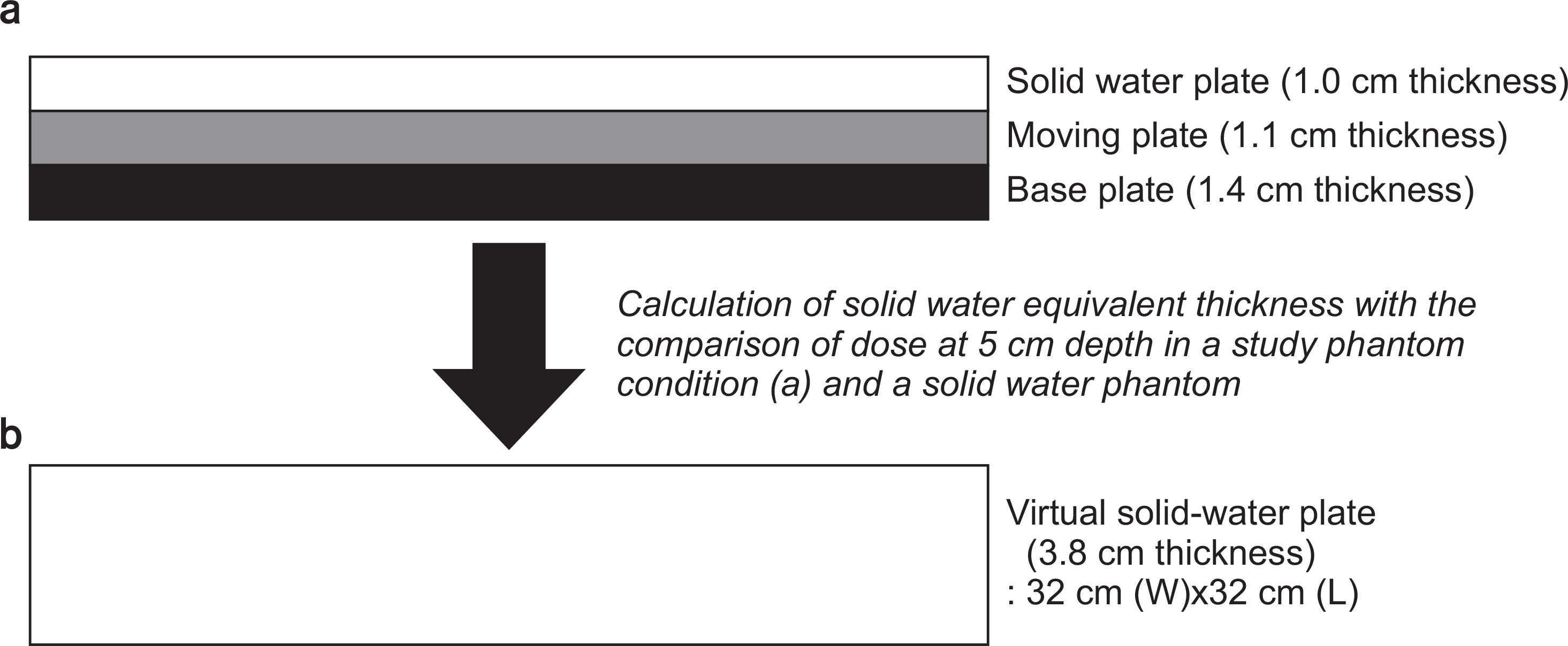
Fig. 3
RapidArc beam intensity which exhibit the same motion as the target and relatively equivalent condition of the target motion: (a) Real treatment condition in ITV-based RapidArc, (b) relatively equivalent condition by the application measured dose data using moving ArcCHECK.
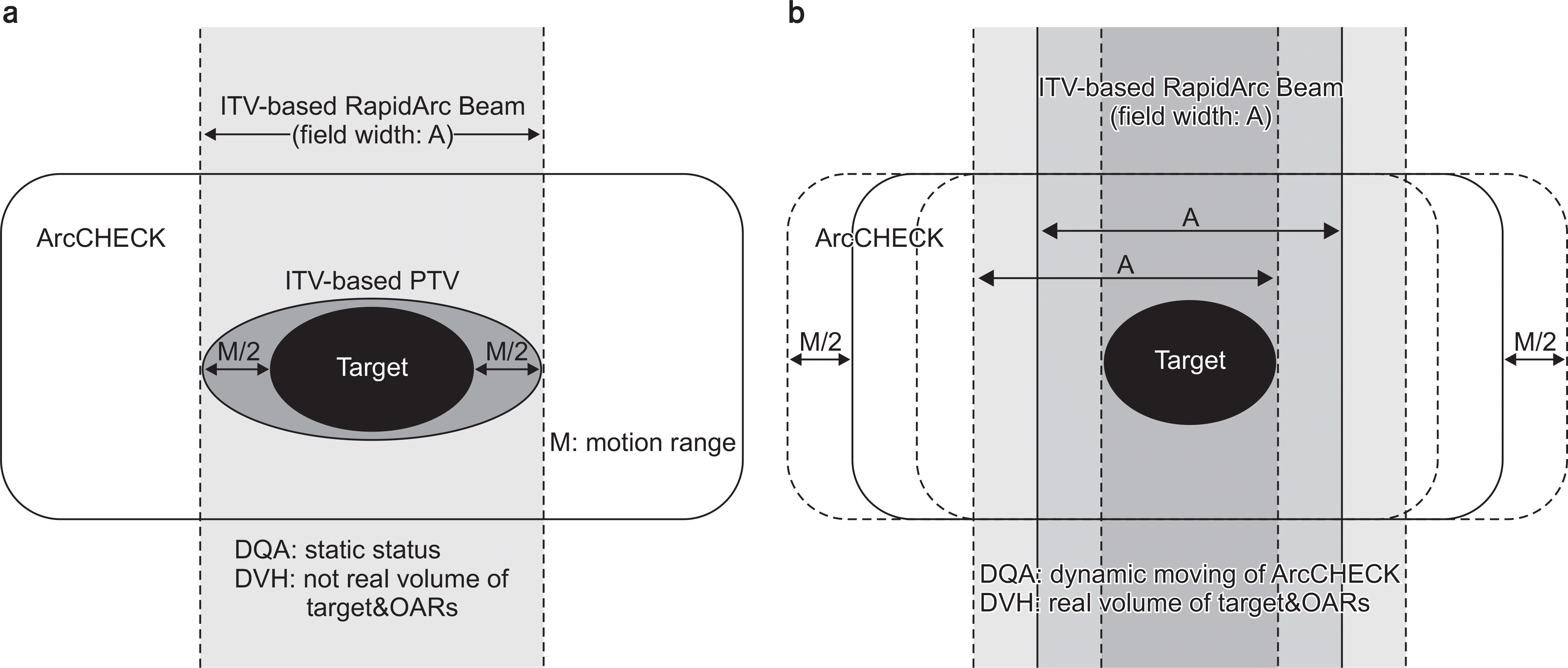
Fig. 4
Effect of moving phantom plates on the DQA error evaluation in patient (B): (a) Increased error due to the effect of the plates in moving phantom, (b) Reduce the error by the application of virtual solid-water plate in reference dose calculation.
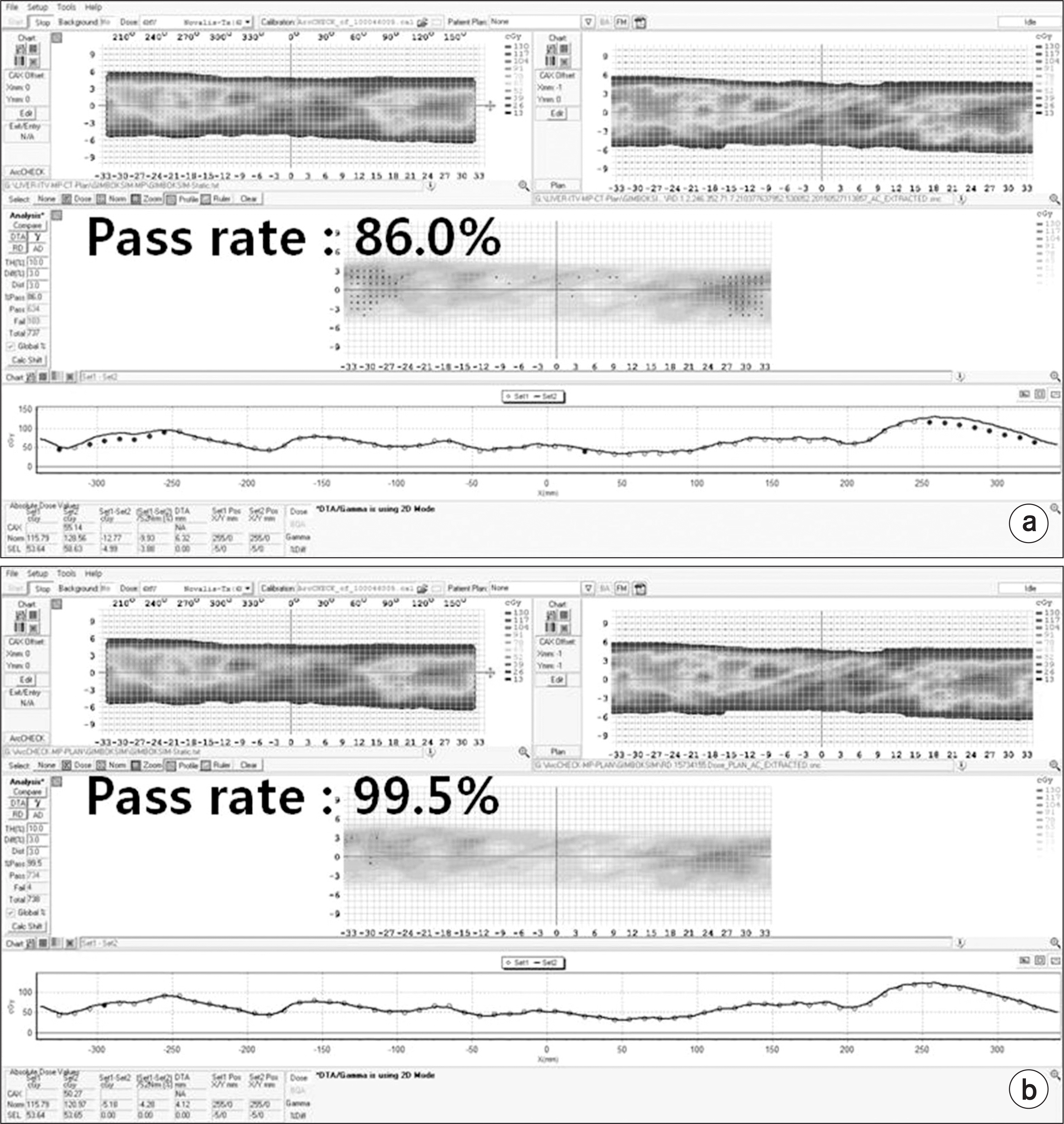
Fig. 5
Total calculated DVH data through dynamic DQA process. Solid line: DVH in the real volume of target and OAR, Dashed line: DVH calculated in the ITV-based RapidArc plan.
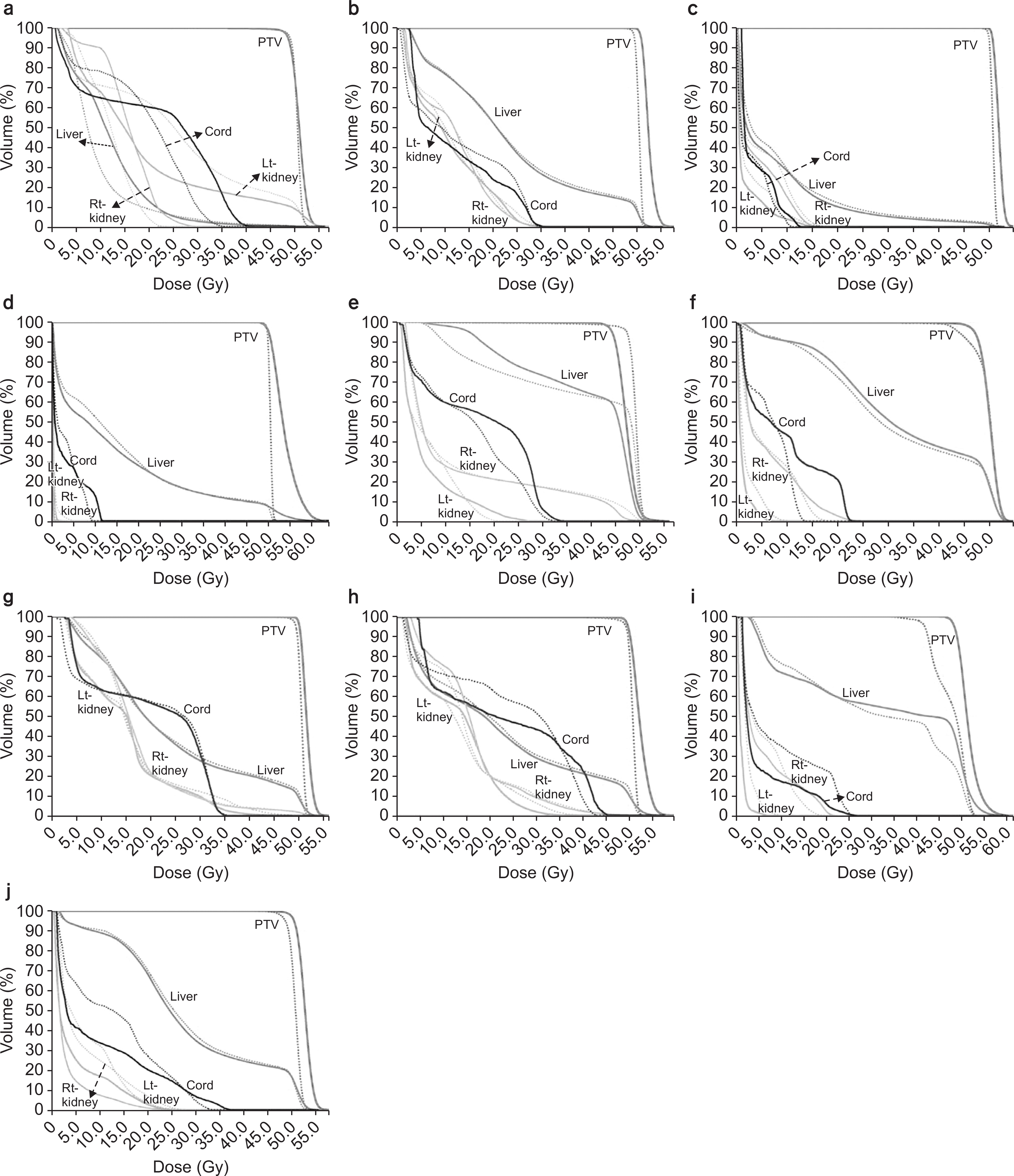
Fig. 6
Dynamic DQA process for ITV-based RapidArc designed in this study to evaluate DVH of the real volume of target and OARs.
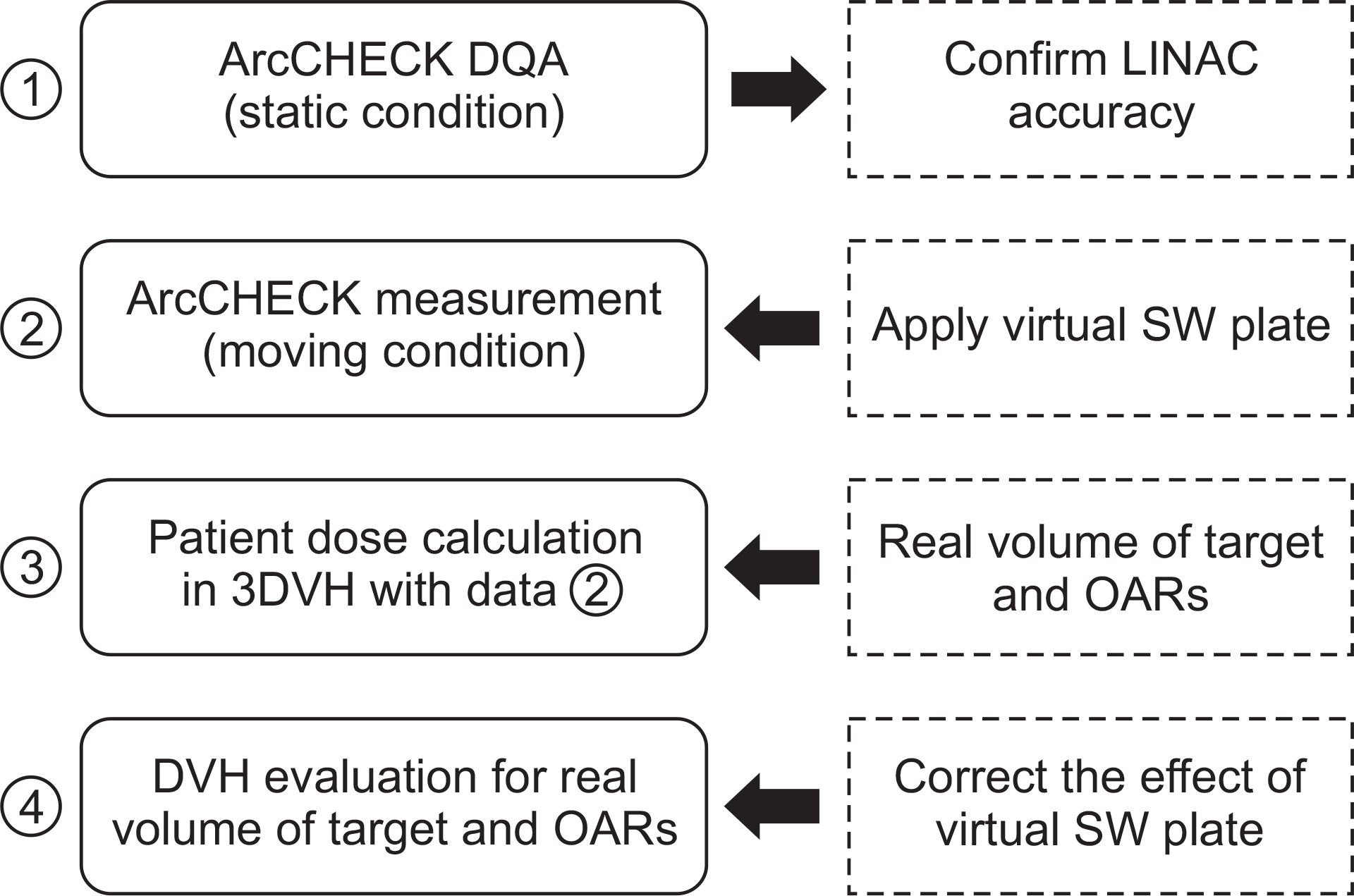
Table 1.
Volume comparison of target and OARs between ITV-based plan and Gated plan with information on the period and range of respiratory motion in each patient.
Table 2.
DQA results of the ArcCHECK measurement in a static condition.
| Patients | A | B | C | D | E | F | G | H | I | J |
|---|---|---|---|---|---|---|---|---|---|---|
| Pass rate (%) | 99.5 | 98.9 | 99.2 | 98.4 | 99.3 | 97.6 | 99.0 | 98.4 | 99.0 | 99.1 |
Table 3.
DQA error analysis according to the effect of virtual SW plate under the static and moving condition.




 PDF
PDF ePub
ePub Citation
Citation Print
Print


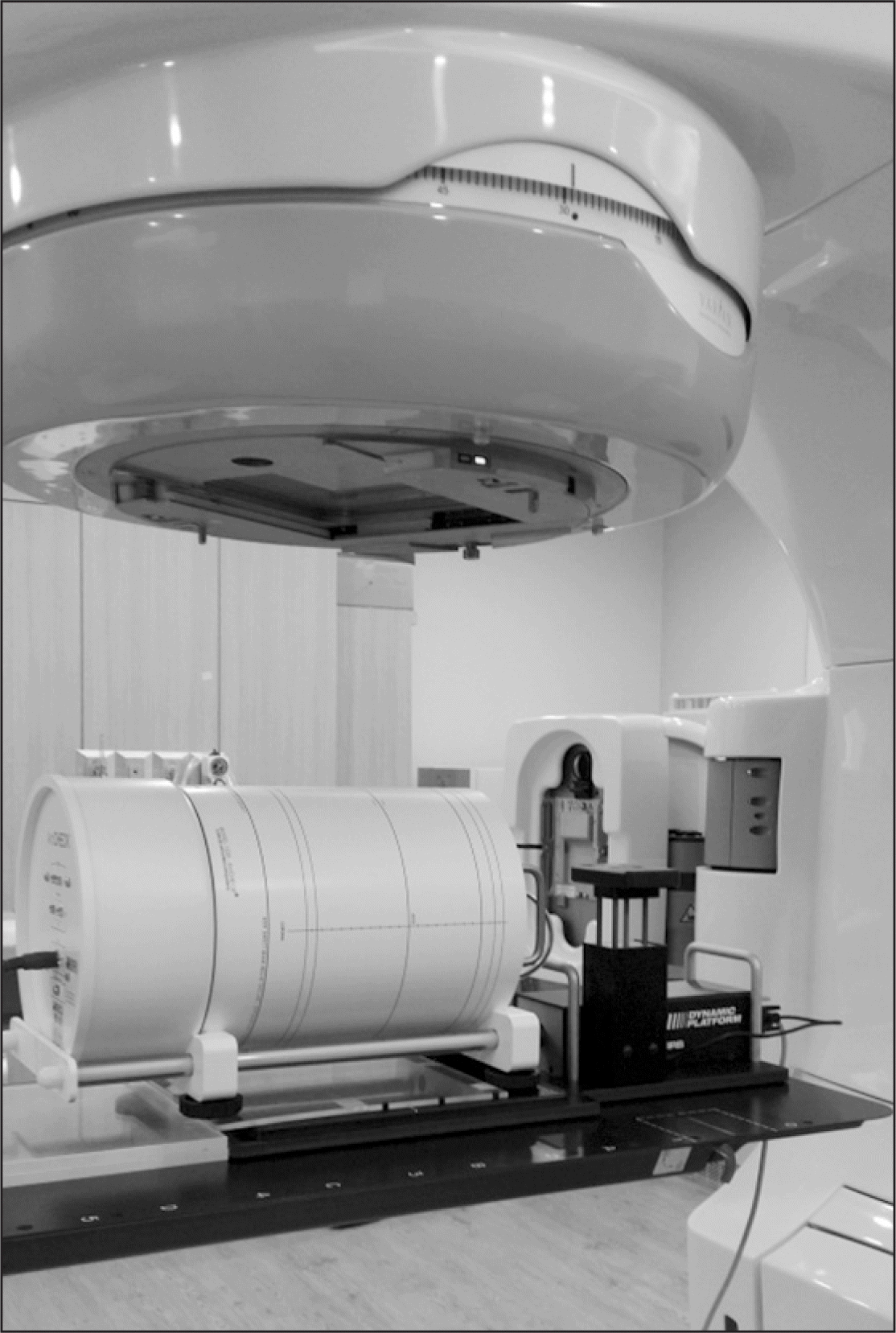
 XML Download
XML Download